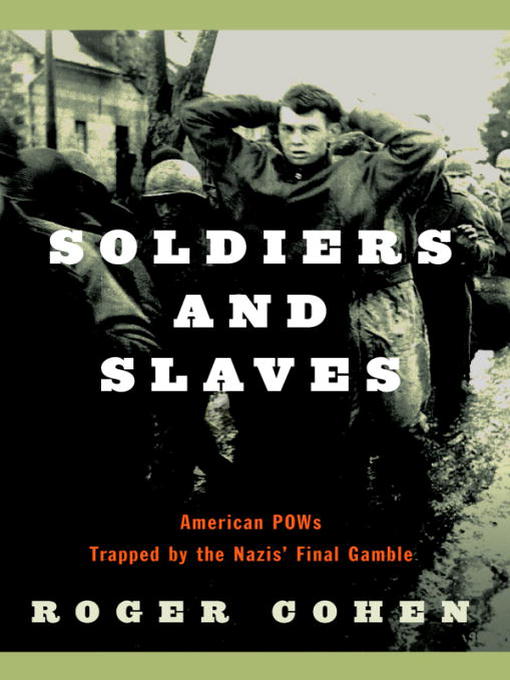
Soldiers and Slaves
American POWs Trapped by the Nazis' Final Gamble
کتاب های مرتبط
- اطلاعات
- نقد و بررسی
- دیدگاه کاربران
نقد و بررسی

February 7, 2005
A former Balkans bureau chief for the New York Times,
Cohen last explored atrocity in Hearts Grown Brutal: Sagas of Sarajevo
; he now steps back 60 years and moves a few hundred kilometers west to recount the fate of 550 American POWs shipped into eastern Germany during the winter of 1944–1945. Most were Jewish—or appeared Jewish enough to satisfy Nazi officials, who needed to meet labor quotas the dying concentration camp inmates were no longer fit to handle. Cohen's interviews with survivors show that the POWs met nearly as dire a fate, as they dug underground to build a synthetic fuel plant, with 20% of them dying and others being crippled for life by rock falls, dust, starvation and by the brutal treatment from the guards. Postwar, the camp fell within what became East Germany, where the investigation into the Holocaust was less rigorously pursued than in the West. The guards got off lightly; the commandant was sentenced to only eight years. Following Germany's reunification, exploration into the methods and motives of the Third Reich has been losing support, Cohen shows; his outrage is plain when he encounters a German environmentalist who wants the surviving caves turned into a bird sanctuary. The book is well organized, but the writing style is not always smooth; it's Cohen's level of detail that makes this journalistic history come alive. 75,000-copy first printing. Agent, Amanda Urban.
7-city author
tour.

July 1, 2003
Foreign editor of the New York Times, Cohen recounts the fate of 350 American POWs-mostly Jewish-used as slave labor by the Nazis. Look for the PBS film.
Copyright 2003 Library Journal, LLC Used with permission.

February 15, 2005
In late 1944, the Germans, in an effort to offset the effects of Allied destruction of their fuel facilities, began construction of several underground facilities to produce and store synthetic fuel. These facilities were to be built largely by slave laborers, many of them diverted from neighboring concentration camps. In February 1945, these workers were joined by several hundred American POWs captured during the Battle of the Bulge. They had been singled out because they were Jewish or looked Jewish, or perhaps even because of random caprice. At a facility in eastern Germany, these Americans would experience the Holocaust as full-fledged victims rather than as liberators of the death camps, with sadistic guards, starvation rations, and consistent dehumanization of inmates. The death rate for POWs at that place was extremely high; it was exacerbated when they had to endure a forced march as the Nazi regime collapsed. Cohen, a foreign correspondent and writer-at-large for the " New York Times," uses survivors' accounts to effectively convey the initial bewilderment and then horror experienced by these Americans.(Reprinted with permission of Booklist, copyright 2005, American Library Association.)

























دیدگاه کاربران